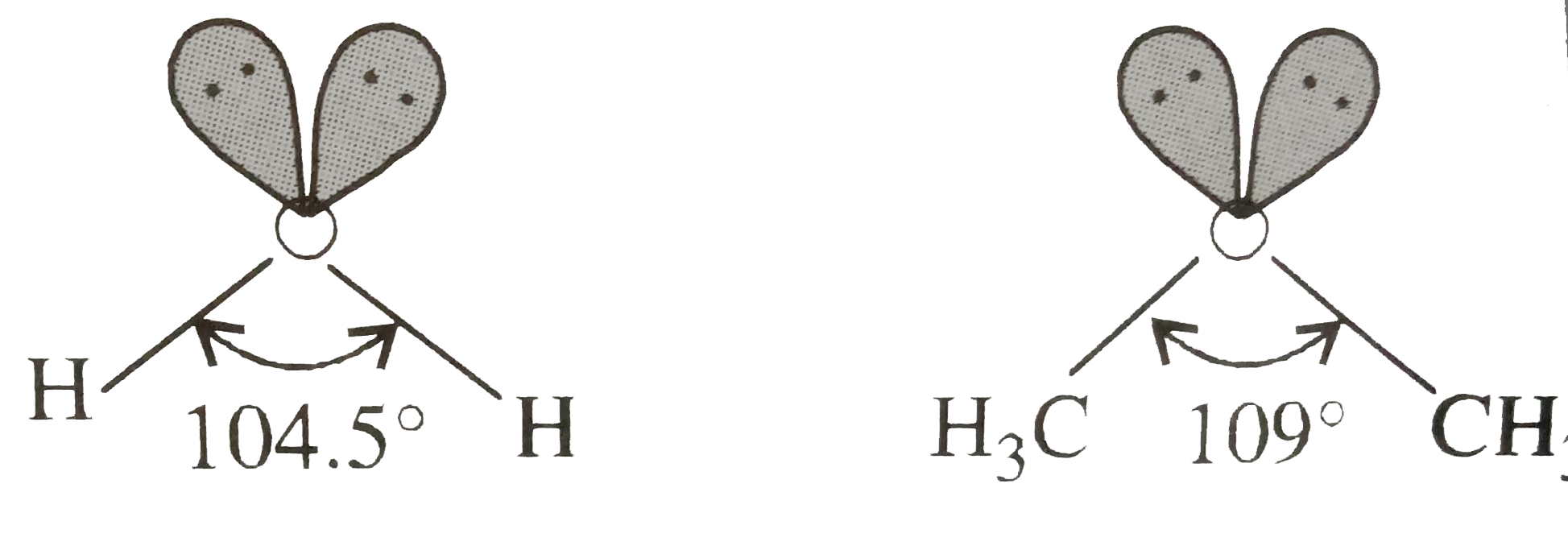⊕NH4 has bond angle identical to CH4 but NH3 has different bond angle. Why?
To understand why the bond angles in the ammonium ion (NH₄⁺) and methane (CH₄) are identical, while ammonia (NH₃) has a different bond angle, we can break down the explanation into clear steps.
1. Identify the Structures:
- Draw the Lewis structures for NH₄⁺, CH₄, and NH₃.
- NH₄⁺ has four hydrogen atoms bonded to a nitrogen atom.
- CH₄ has four hydrogen atoms bonded to a carbon atom.
- NH₃ has three hydrogen atoms bonded to a nitrogen atom and one lone pair of electrons on the nitrogen.
2. Hybridization:
- Determine the hybridization of the central atom in each molecule.
- In NH₄⁺ and CH₄, the central atoms (N in NH₄⁺ and C in CH₄) are both sp³ hybridized.
- In NH₃, the nitrogen atom is also sp³ hybridized.
3. Geometry and Shape:
- Identify the geometry and shape of each molecule.
- Both NH₄⁺ and CH₄ have a tetrahedral geometry and shape, leading to bond angles of approximately 109.5°.
- NH₃ has a tetrahedral geometry but a trigonal pyramidal shape due to the presence of the lone pair.
4. Effect of Lone Pairs:
- Discuss the influence of lone pairs on bond angles.
- In NH₃, the lone pair of electrons on nitrogen exerts a repulsive force on the bonding pairs of electrons.
- This repulsion causes the bond angle in NH₃ to decrease to about 107°.
5. Comparison of Bond Angles:
- Summarize the bond angles:
- NH₄⁺ and CH₄: 109.5°
- NH₃: 107°
- Conclude that the presence of the lone pair in NH₃ is responsible for the smaller bond angle compared to NH₄⁺ and CH₄.
Conclusion:
The bond angles in NH₄⁺ and CH₄ are identical because both have a tetrahedral shape with no lone pairs. In contrast, NH₃ has a lone pair that alters its shape to trigonal pyramidal, resulting in a smaller bond angle due to lone pair-bond pair repulsion.
- Draw the Lewis structures for NH₄⁺, CH₄, and NH₃.
- NH₄⁺ has four hydrogen atoms bonded to a nitrogen atom.
- CH₄ has four hydrogen atoms bonded to a carbon atom.
- NH₃ has three hydrogen atoms bonded to a nitrogen atom and one lone pair of electrons on the nitrogen.
- Determine the hybridization of the central atom in each molecule.
- In NH₄⁺ and CH₄, the central atoms (N in NH₄⁺ and C in CH₄) are both sp³ hybridized.
- In NH₃, the nitrogen atom is also sp³ hybridized.
- Identify the geometry and shape of each molecule.
- Both NH₄⁺ and CH₄ have a tetrahedral geometry and shape, leading to bond angles of approximately 109.5°.
- NH₃ has a tetrahedral geometry but a trigonal pyramidal shape due to the presence of the lone pair.
- Discuss the influence of lone pairs on bond angles.
- In NH₃, the lone pair of electrons on nitrogen exerts a repulsive force on the bonding pairs of electrons.
- This repulsion causes the bond angle in NH₃ to decrease to about 107°.
- Summarize the bond angles:
- NH₄⁺ and CH₄: 109.5°
- NH₃: 107°
- Conclude that the presence of the lone pair in NH₃ is responsible for the smaller bond angle compared to NH₄⁺ and CH₄.
The bond angles in NH₄⁺ and CH₄ are identical because both have a tetrahedral shape with no lone pairs. In contrast, NH₃ has a lone pair that alters its shape to trigonal pyramidal, resulting in a smaller bond angle due to lone pair-bond pair repulsion.
Topper's Solved these Questions
- PERIODIC CLASSIFICATION OF ELEMENTS AND GENERAL INORGANIC CHEMISTRYBOOK - CENGAGE CHEMISTRY ENGLISHCHAPTER - PERIODIC CLASSIFICATION OF ELEMENTS AND GENERAL INORGANIC CHEMISTRYEXERCISE - Ex 1.3 (Objective)
8 Videos
- PERIODIC CLASSIFICATION OF ELEMENTS AND GENERAL INORGANIC CHEMISTRYBOOK - CENGAGE CHEMISTRY ENGLISHCHAPTER - PERIODIC CLASSIFICATION OF ELEMENTS AND GENERAL INORGANIC CHEMISTRYEXERCISE - Ex 1.3 (Multiple Correct)
5 Videos
- PERIODIC CLASSIFICATION OF ELEMENTS AND GENERAL INORGANIC CHEMISTRYBOOK - CENGAGE CHEMISTRY ENGLISHCHAPTER - PERIODIC CLASSIFICATION OF ELEMENTS AND GENERAL INORGANIC CHEMISTRYEXERCISE - Ex 1.2(Objective)
22 Videos
- P-BLOCK GROUP 14 - CARBON FAMILYBOOK - CENGAGE CHEMISTRY ENGLISHCHAPTER - P-BLOCK GROUP 14 - CARBON FAMILYEXERCISE - Exercises Archives (Subjective)
9 Videos
- PURIFICATION OF ORGANIC COMPOUNDS AND QUALITATIVE AND QUANTITATIVE ANALYSISBOOK - CENGAGE CHEMISTRY ENGLISHCHAPTER - PURIFICATION OF ORGANIC COMPOUNDS AND QUALITATIVE AND QUANTITATIVE ANALYSISEXERCISE - Assertion Reasoning Type
5 Videos
Similar Questions
The bond angles in NH+4 and CH4 are same but NH3 has different bond angle. Why ?
View SolutionWhich has maximum bond angle?
View SolutionWhich has maximum bond angle?
View SolutionOut of H2O which one has higher bond angle and why?
View SolutionExplain why :
NH3 has a bond angle equal to 107∘?
View SolutionThe bond angles in NH3,NF3andNCl3 are in the order:
View SolutionBond angle in NH3 is more than in PH3. Explain.
View SolutionThe bond angles of NH3,NH+4andNH−2 are in the order
View SolutionIn both water and dimethyl ether (CH3−..O..−CH3), oxygen atoms is central atom, and has the same hybridisation, yet they have different bond angles. Which one has greater bond angle? Give reason.
View SolutionIn both water and dimethyl ether (CH3−⋅⋅O⋅⋅−CH3), oxygen atom is central atom, and has the same hybridisation, yet they have different bond angles. Which one has greater bond angle ? Give reason.

View Solution